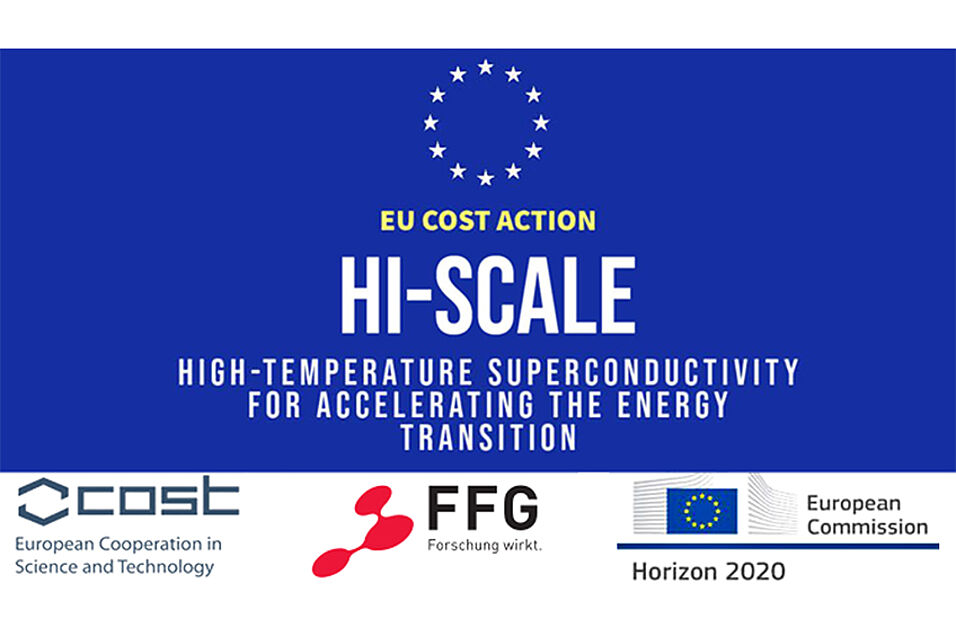Prof. Dr. Wolfgang Lang and PD Dr. habil. Oleksandr Dobrovolskiy are nominated as Management Committee Members from Austria
Researchers led by Prof. Wolfgang Lang from the Electronic Properties of Materials group and PD Dr. habil. Oleksandr V. Dobrovolskiy from the SuperSpin Lab at Nanomagnetism and Magnonics have joined the network of researchers from 20 other countries pursuing the implementation of High-Temperature Superconductors (HTS) in all the different parts of the electrical energy chain. This collaborative project is funded by the European COST Action CA19108 “High-Temperature SuperConductivity for AcceLerating the Energy Transition” (HI-SCALE), which will continue through 07/10/2024.
Superconducting materials are becoming a more viable option to improve the energy transition, thanks to their lack of electrical resistivity and other properties like the ability to carry bigger currents and to control large magnetic fields. HTS materials can become superconducting above the temperature of liquid nitrogen, attractive for the field of energy transmission, distribution and storage, which could be made more compact and efficient with disruptive technologies.
The two groups of the Faculty of Physics will contribute to the COST Action by joint studies of the superconducting and magneto-resistive properties of HTS cuprates with particular focus on the evolution of their current-carrying ability in consequence of irradiation with ions, electrons, various extreme exposures, nanopatterning, and interaction with quasiparticle ensembles.
About COST Action CA19108 (HI-SCALE)
Superconductivity is a fascinating state of matter characterized by the absence of electrical resistivity that certain materials exhibit when cooled below a certain critical, cryogenic temperature. Together with other unique properties, like the ability to carry huge currents and trap extremely large magnetic fields, superconductors pave the way for accelerating the Energy Transition.
HTS materials are able to enter superconductivity above the temperature of (cheap) liquid nitrogen, making possible more compact, efficient, and even disruptive technologies that can be integrated into all the links of the electrical energy chain, from generation to transmission and distribution, use and energy storage, enabling its decarbonization.
Despite the potential benefits and successful demonstrators of HTS technologies, they still lack mass penetration in the electrical system. Several reasons pointed out by industry include concerns related to costs and uncertainty about cryogenics; reliability, and the idea that only highly skilled professionals will be able to operate the latter. Other causes relate to a lack of systematic knowledge about the design of HTS systems for the grid, and on how to simulate their performance using standard software packages.
This COST Action tackles all the above challenges, by a systemic approach that will create the path from materials to devices; foster improved modelling and advanced computation paradigms; provide methodologies and demonstrators for addressing industrial challenges and applications; and develop tools for the economic and sustainability assessment of HTS technologies.

